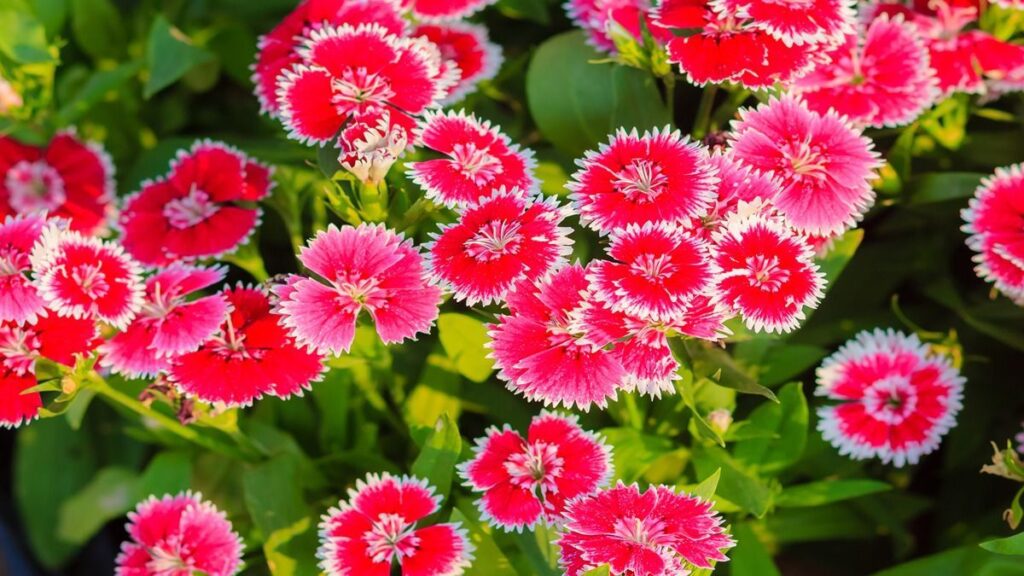Dianthus Plants Introduction:
Dianthus, often referred to as “pinks” or “carnations,” are beloved flowering plants cherished for their beauty, fragrance, and versatility.
From vibrant garden borders to delicate cut flower arrangements, dianthus plants add charm and elegance to any landscape. Let’s delve into the fascinating realm of dianthus and uncover its secrets.
Origins and Varieties:
Originating from Europe and Asia, dianthus species boast a rich history dating back centuries.
Today, there are over 300 species and numerous cultivars, each offering unique characteristics in terms of color, size, and growth habit.
From compact Alpine pinks (Dianthus alpinus) to towering Sweet Williams (Dianthus barbatus), there’s a dianthus variety for every garden.
Growing Conditions:
Dianthus thrive in well-draining soil and prefer full sun, although some species tolerate partial shade. Adequate air circulation is crucial to prevent mildew and fungal diseases.
These hardy plants are relatively low-maintenance, requiring moderate watering and occasional fertilization. With proper care, dianthus can flourish in garden beds, containers, or rock gardens.
Flowers and Fragrance:
Dianthus flowers captivate with their intricate petals and delightful fragrance, often described as spicy or clove-like.
Blooms come in an array of hues, including pink, red, white, and bicolors, attracting pollinators like bees and butterflies.
Many varieties produce abundant flowers throughout the growing season, providing long-lasting beauty and fragrance to the garden.
Propagation and Maintenance:
Propagating dianthus is relatively simple, with options including division, stem cuttings, and seed sowing.
Regular deadheading encourages continuous blooming and prevents self-seeding in some cultivars.
Occasional grooming helps maintain a neat appearance and promotes vigorous growth.
Additionally, mulching around dianthus plants aids in moisture retention and weed suppression.
Landscaping Ideas:
Dianthus’s versatility makes it a valuable addition to various landscaping schemes. Plant them along borders, pathways, or rock gardens for a pop of color and fragrance.
Mix different dianthus varieties to create eye-catching combinations, or pair them with complementary perennials and annuals for a dynamic display. Dianthus also thrives in containers, brightening patios and balconies with their cheerful blooms.
Pests and Diseases:
While dianthus is generally resilient, they may encounter pests like aphids, thrips, and spider mites, especially in humid conditions.
Regular inspection and prompt treatment with organic solutions or insecticidal soap help keep infestations under control. Proper spacing and good airflow can prevent common fungal diseases such as powdery mildew and rust.
Conclusion:
Dianthus plants are cherished for their beauty, fragrance, and ease of cultivation, making them a favorite among gardeners worldwide.
Whether adorning flower beds, containers, or bouquets, these charming blooms add a touch of elegance and cheer to any setting. Explore the enchanting world of dianthus and elevate your garden with their timeless allure.

